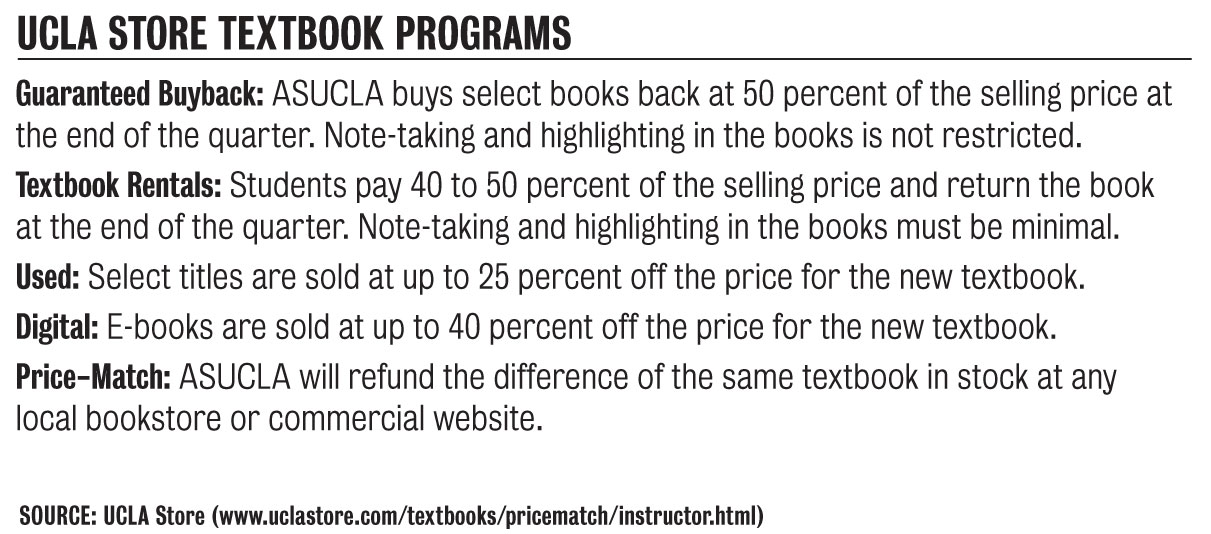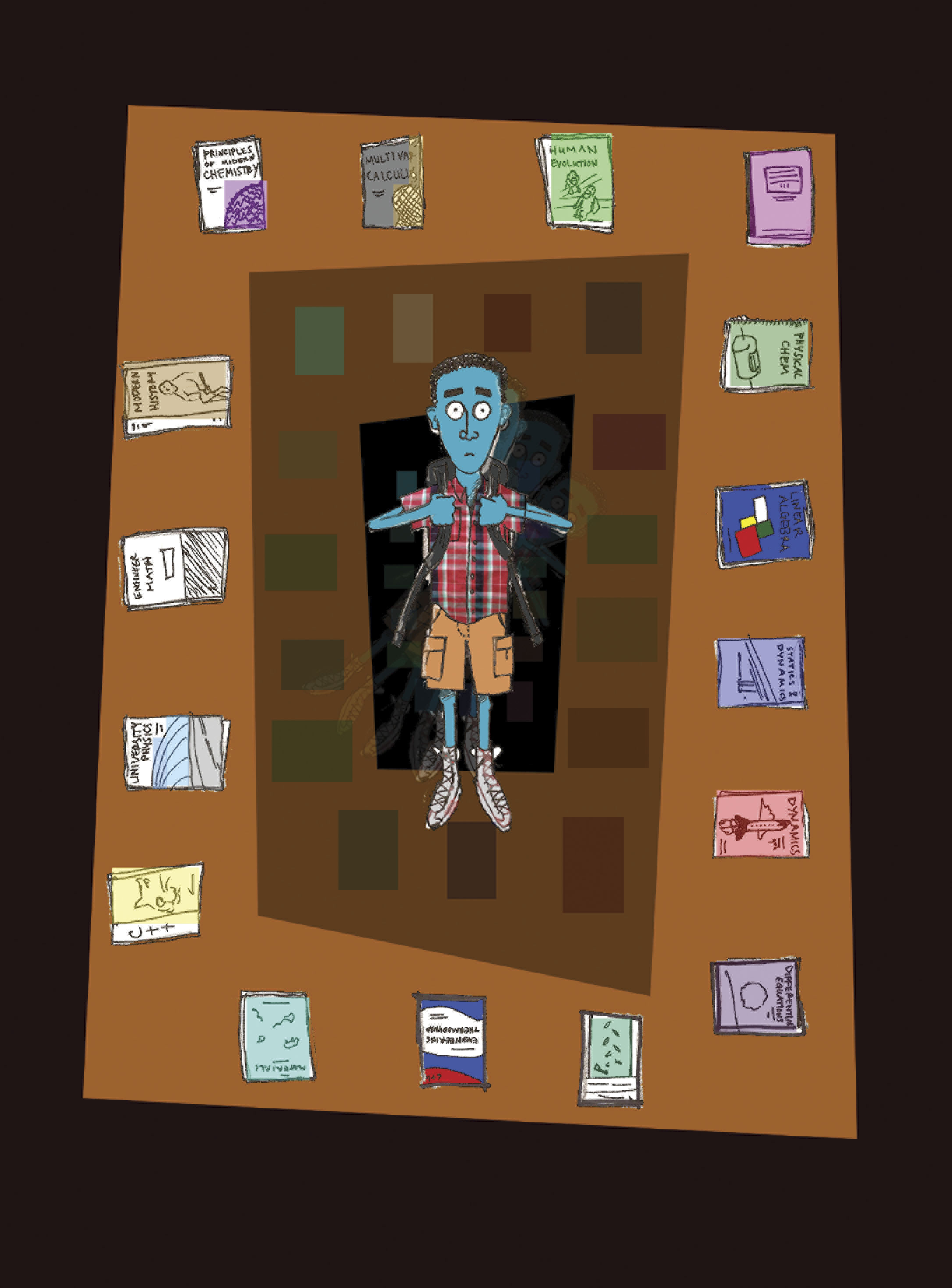
Hesitation has become my wallet’s survival tactic against overpriced materials.
Pricey textbooks are the embodiment of a broke student’s struggle, and when a necessity becomes tricky to obtain, we all pursue shortcuts.
As students move through their academic career at UCLA, using marketplace websites and networking through friends to find textbooks becomes much more frequent.
But with a new buyback program for the fall, students should purchase textbooks on campus, and Associated Students UCLA should in turn continue to work on book affordability to compete with outside sellers.
Students should not only want to give their institution their business, but it should feel like a valuable investment. This is the part of the deal that is contingent on UCLA providing reasonable prices, and more importantly reasonably priced textbook buyback programs.
Rustom Z. Birdie, financial support commissioner of Undergraduate Students Association Council, has been working with ASUCLA to improve the textbook buyback program.
Birdie’s proposal includes a higher buyback value.
The store is motivated to give back more because returns will be issued in store credit.
Right now the range is anywhere from 10 to 50 percent of the initial purchase, but with the new program students can expect to get an extra 20 percent of returned value than before, unless they opt for a cash return.
“This is a win-win situation for ASUCLA and the students. It provides a higher return for students, and it guarantees revenue for the school,” Birdie said.
A snowball effect will inevitably ensue.
The most effective way to reduce textbook costs is to have more used textbooks in stock, so obviously the more that we students provide UCLA with our business, the cheaper the market will eventually become.
The new buyback program must also have significant increases in return value in order to flourish.
Widespread applicability for store credit, like at Lu Valle and Northern Lights, would encourage buyback as well.
Students will be much more likely to participate in the program if they are given flexibility with where they can shop, considering we inevitably spend money on campus.
Exactly where the proposed store credit can be used is yet to be decided, but because so many campus eateries and stores are run by ASUCLA, there shouldn’t be a need to restrict the store credit to textbooks only.
Students should also be able to use the credit to buy some on-campus lunch or a cup of coffee.
Despite the new plan, however, other websites may still be cheaper.
Anadjeet Khahera, third-year physiological sciences student says he now only makes use of marketplace sites, like Half.com and Chegg.com.
“When you’re a freshman, you don’t really understand the textbook market. But I usually find my books much cheaper than I do at school after comparing,” Khahera said.
To have a fighting chance against the competition, ASUCLA should refine its existing programs.
ASUCLA has developed various programs to bolster textbook sales out of the UCLA Store, such as price-matching, providing rental books and guaranteed buyback (which means that if a professor has agreed to use a book for two consecutive quarters, a student is guaranteed 50 percent buyback while the sticker is still on the cover).
However, there are several restrictions on the price-matching program, such as not being able to purchase from marketplace or international websites.
Renting is also sometimes difficult because marking the book must be kept to a minimum. Many students need to do highlighting and note-jotting to aid their learning process.
The restrictions on price-matching should loosen, and programs like rentals and e-books should be better promoted.
Significant changes must be made if ASUCLA hopes to cement students’ loyalty to the UCLA Store. Many students will reconsider where they shop if the new program, and old ones, provide them with enough reason to do so.
